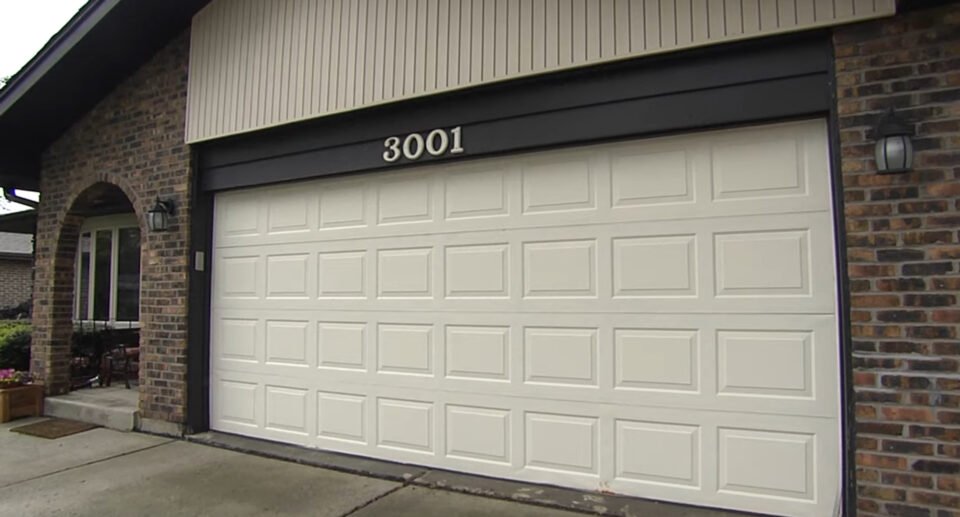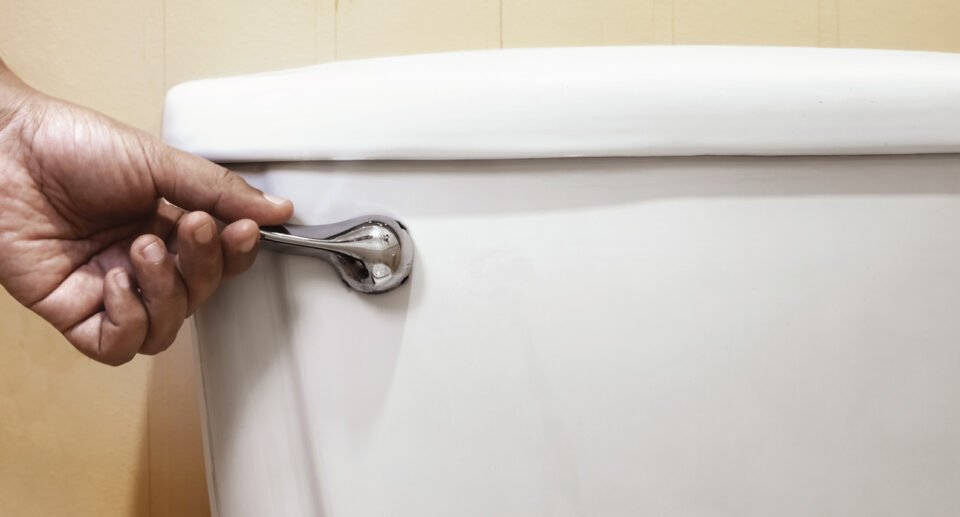How to Paint a Garage Door? Your Ultimate Guide With Video

Table of Contents
TogglePainting a garage door is a simple and affordable way to enhance your home’s curb appeal and protect the door from the elements. However, it can be a daunting task for those who have never done it before.
With the right tools, techniques, and a bit of patience, anyone can paint their garage door and achieve professional-looking results.
Before diving into the painting process, it is important to properly prepare the garage door. This includes cleaning the door thoroughly, removing any peeling or flaking paint, and repairing any damage. Choosing the right paint is also crucial, as it can affect the durability and appearance of the finished product.
By following a few simple steps and techniques, anyone can paint a garage door and give their home’s exterior a fresh new look.
Key Takeaways
- Proper preparation is key to achieving a professional-looking paint job on a garage door.
- Choosing the right paint and using the correct techniques can ensure the durability and appearance of the finished product.
- Regular maintenance and care can help prolong the life of the paint job and keep the garage door looking its best.
Preparing the Garage Door
Painting a garage door starts with preparing the surface to ensure a smooth and even finish. This involves cleaning, sanding, priming, and taping off areas as necessary.
Here are the steps to follow for preparing a garage door for painting.
Cleaning the Door
The first step in preparing a garage door for painting is to clean the surface thoroughly. This can be done using an all-purpose cleaner and a sponge or wire brush.
It is important to remove any dirt, grease, or grime that could prevent the paint from adhering properly. After cleaning, the door should be rinsed with water and allowed to dry completely.
Sanding and Priming
Once the door is clean and dry, it should be sanded lightly to remove any rough spots or peeling paint. This can be done using sandpaper with a medium grit.
After sanding, the door should be wiped down with a damp cloth to remove any dust or debris.
Next, a latex exterior primer should be applied to the entire door surface using a paintbrush or roller. Be sure to cover any exposed areas, including corners and edges.
Allow the primer to dry according to the manufacturer’s instructions, typically between a few hours to a full day, depending on temperature and humidity.
Taping Off Areas
Before painting, it is important to tape off any areas that should not be painted, such as windows or door handles. This can be done using painter’s tape.
A drop cloth should also be placed on the ground to protect the surrounding area from paint drips. Rubber gloves should be worn to protect the hands from paint and chemicals.
By following these steps, a garage door can be properly prepared for painting. It is important to take safety precautions and use the appropriate materials for each step of the process.
Choosing the Right Paint
When it comes to painting a garage door, selecting the right paint is crucial to achieving a professional and long-lasting finish. The following subsections will provide guidance on the types of paint and colors to consider.
Types of Paint
For an exterior garage door, it is recommended to use a 100% acrylic paint, such as Benjamin Moore’s AURA® Exterior or Regal® Select Exterior High Build.
These types of paint are durable, resist fading, and are easy to clean.
When selecting paint, it is important to consider the finish. For a garage door, a satin or semi-gloss finish is recommended. These finishes are easy to clean and provide a sleek look.
Selecting a Color
When selecting a color for a garage door, it is important to consider the color scheme of the house. For a cohesive look, consider choosing a color that complements the existing colors of the house.
White, beige, and gray are popular color choices for garage doors. These colors are neutral and versatile, making them easy to match with the rest of the house.
It is also important to consider the type of outdoor paint being used. Some paints require a second coat, while others do not. Be sure to read the manufacturer’s instructions before beginning the painting process.
Painting Techniques
Using a Paintbrush
Using a paintbrush is a great option for painting a garage door. It allows for precision and control, especially when painting around windows and other details.
When using a paintbrush, make sure to choose one that is appropriate for the type of paint being used. Synthetic-bristle paintbrushes are best for acrylic paint, while natural-bristle brushes are better for oil-based paint.
Before painting, make sure the garage door is clean and dry. Apply paint in thin, even coats, starting at the top of the door and working downwards.
Use long, smooth strokes, and be sure to feather the paint at the edges to avoid visible brush marks. For best results, apply multiple coats of paint, allowing each coat to dry completely before applying the next.
Using a Paint Roller
Using a paint roller is another option for painting a garage door. It is a faster method than using a paintbrush, but may not be as precise.
When using a paint roller, choose one with a medium nap for a smooth finish. It is also important to use a roller cover that is appropriate for the type of paint being used.
Before painting, make sure the garage door is clean and dry. Apply paint in thin, even coats, starting at the top of the door and working downwards.
Use long, smooth strokes, and be sure to overlap each stroke slightly to avoid visible roller marks. For best results, apply multiple coats of paint, allowing each coat to dry completely before applying the next.
Regardless of the painting technique used, make sure to let the paint dry completely before closing the garage door. This will prevent the paint from sticking to the door and causing damage.
It is also important to clean and maintain the paintbrushes and paint rollers after use to ensure they last for future projects.
Addressing Common Challenges
Dealing with Weather
Weather conditions can have a significant impact on the outcome of a garage door painting project.
It is important to choose a day that is dry and sunny, with temperatures between 50 and 80 degrees Fahrenheit. If the weather is too hot or too cold, the paint may not adhere properly, resulting in an uneven finish.
To protect the door from the elements, it is recommended to paint the door during the spring or fall when temperatures are mild. If painting during the summer months, it is best to paint early in the morning or late in the evening when the sun is not as strong.
Preventing Rust
Rust is a common problem with metal garage doors. Before painting the door, make sure to remove any rust that is present.
This can be done by sanding the affected areas with a fine-grit sandpaper and then wiping the door down with a clean, dry cloth.
To prevent rust from forming in the future, make sure to use a rust-inhibiting primer before painting the door. This will help to seal the door and prevent moisture from getting in, which can lead to rust formation.
Achieving Even Coverage
Achieving even coverage when painting a garage door can be challenging, especially if the door has raised panels or other intricate details.
To ensure even coverage, make sure to use a high-quality paint and to apply it in thin, even coats.
Before painting the door, make sure to clean the surface thoroughly and to sand any rough spots or imperfections. This will help the paint to adhere properly and will ensure a smooth, even finish.
To blend in any brush or roller marks, use a paintbrush to lightly feather out the edges of each section as you go. This will help to create a seamless finish and will ensure that the door looks great when it is finished.
Finishing Touches
After completing the painting process, it is essential to finish up the task properly. This section will cover the two crucial steps that need to be taken before considering the job complete.
Removing the Tape
Once the paint has dried, carefully remove the painter’s tape. Do not rush to remove the tape as it may cause the paint to peel off.
Use a utility knife to cut the edges of the tape to avoid chipping the paint. Then, gently pull the tape at a 45-degree angle away from the painted surface to achieve a clean edge.
Cleaning Up
After removing the tape, it’s time to clean up the area. First, put away all the painting materials and equipment. Dispose of the used paint cans and brushes properly.
Clean any spills or drips with a damp cloth.
If there is any paint on the trim, use a step stool and a small brush to touch up the trim. If the garage door has shutters, make sure that they are painted uniformly with the garage door.
Finally, inspect the garage door for any chipping paint or spots that need touching up. If there are any areas that need attention, use a small brush to touch up the paint.
Maintenance and Care
Maintaining a garage door is crucial to ensure its longevity and durability. A well-maintained garage door can last for many years and save you money in the long run. Here are some tips on how to maintain and care for your garage door:
- Regularly inspect your garage door for any damages, such as dents, cracks, or rust. If you notice any damages, repair them as soon as possible to prevent further damage.
- Clean your garage door regularly to remove dirt and debris. Use a mild detergent and water to clean the door, and avoid using harsh chemicals that can damage the door’s surface.
- Lubricate the moving parts of your garage door, such as the hinges, rollers, and tracks, to ensure smooth and quiet operation. Use a silicone-based lubricant for best results.
- Test the balance of your garage door regularly by disconnecting the opener and manually lifting the door. If the door is difficult to lift or falls quickly, it may be out of balance and require professional service.
- Check the weatherstripping around your garage door to ensure it is in good condition and properly sealed. This can help prevent drafts and keep your garage insulated.
Frequently Asked Questions
When painting a metal garage door, make sure to use a high-quality exterior paint that is specifically formulated for metal. Look for paint products that offer durability, weather resistance, and UV protection.
Acrylic latex paint is a popular choice for painting metal garage doors as it provides a good finish and is easy to work with.
To avoid sticking, make sure to properly prepare the garage door surface before painting. Clean the door thoroughly with soap and water, and then sand it lightly with fine-grit sandpaper to create a rough surface for the paint to adhere to.
Use a paint that is designed to dry quickly to prevent sticking.
When using a roller to paint a garage door, make sure to choose the right roller cover. A 3/8-inch nap roller cover is ideal for most garage door surfaces.
Start by painting the recessed areas of the door with a brush, and then use the roller to paint the rest of the door.
Use long, even strokes to apply the paint, and be sure to overlap each stroke slightly to avoid leaving streaks.
If your metal garage door is peeling, you will need to remove the peeling paint before painting.
Use a scraper or wire brush to remove the loose paint. Then, sand the door lightly with fine-grit sandpaper.
Clean the door thoroughly with soap and water, and then follow the steps for painting a metal garage door.
Both brushes and rollers can be used to paint a garage door.
Brushes are better for painting small areas and details, while rollers are better for larger surfaces. For best results, use a combination of both.
Start by painting the recessed areas of the door with a brush, and then use the roller to paint the rest of the door.
To achieve a professional finish when painting a garage door, it is important to follow the proper steps.
Start by cleaning and preparing the door surface. Then, apply a high-quality primer.
Once the primer is dry, apply the paint in thin, even coats, using a combination of brushes and rollers.
Allow the paint to dry completely between coats. Then, apply a protective topcoat for added durability.

Hello, I’m Keith Jones. I’m the author and head of content here of door and window guide. I’ve been in the window and door industry for over 10 years in the UK and North America. I’ve had quite a few roles during my career mainly in Worldwide sales. I’m now semi retired so I thought I’d put my knowledge to good use educating people about all they might need to know about door and window related topics.






